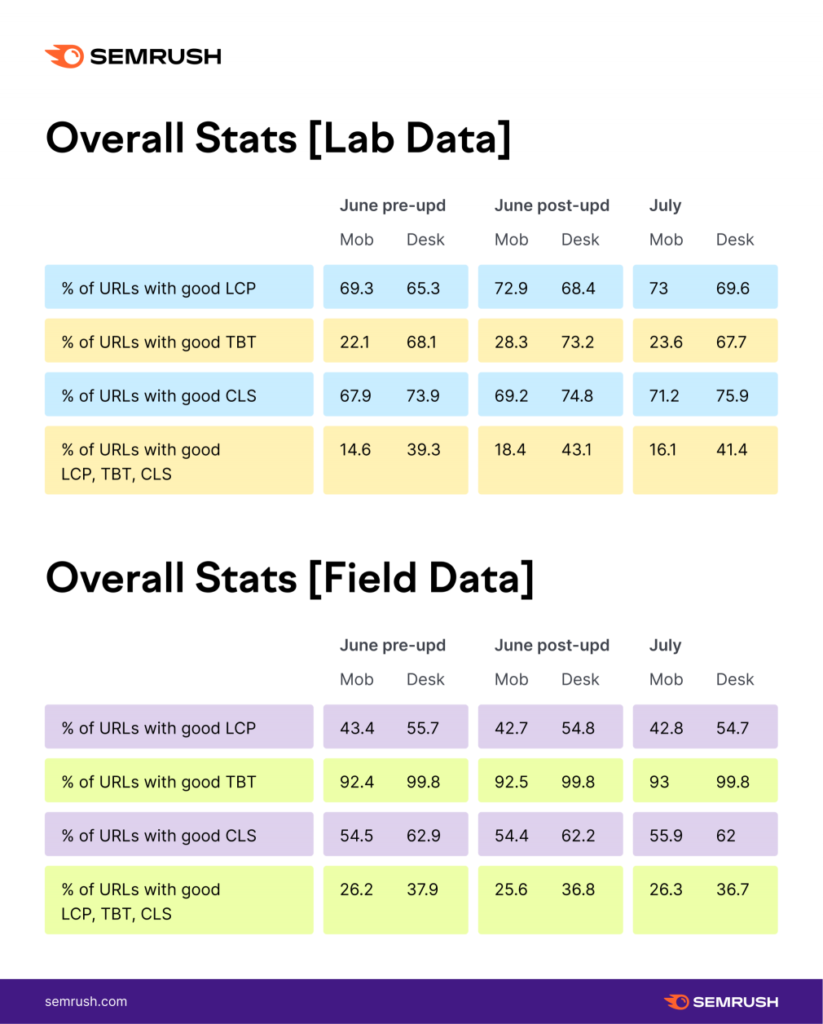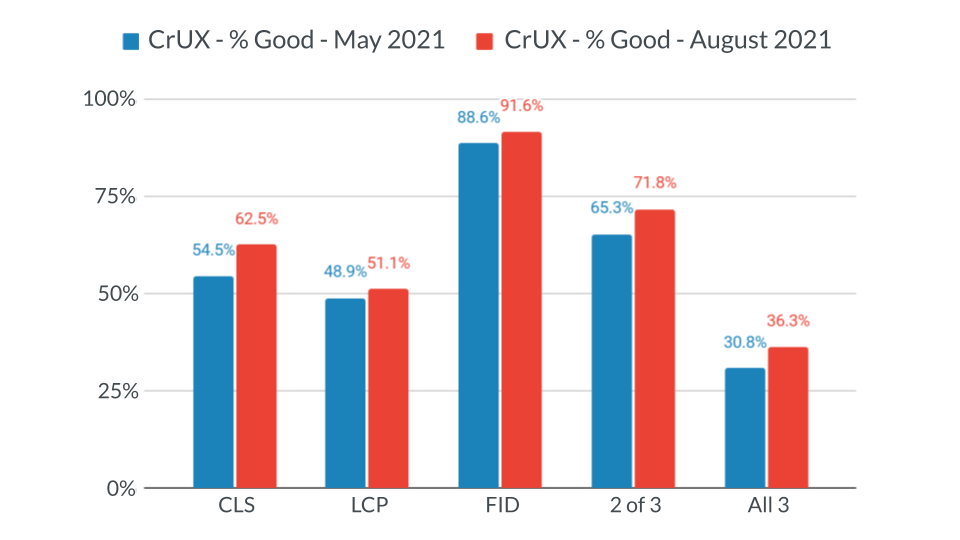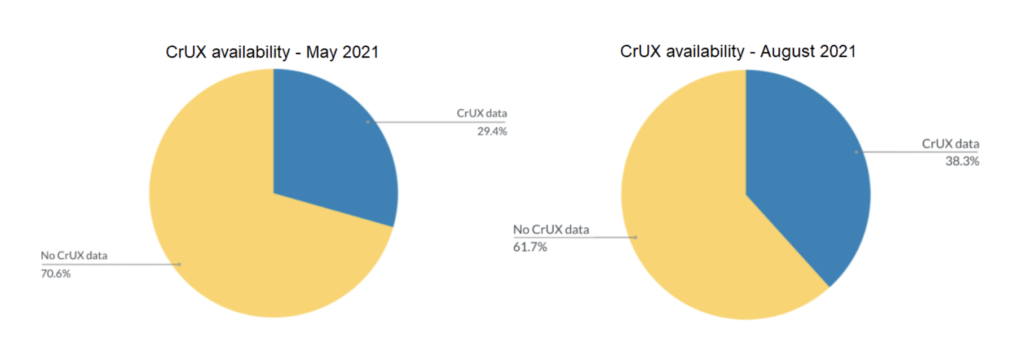Introduction
Google rolled out its Core Web Vitals update algorithm in June 2021 that factors in page experience as a ranking signal. It introduced performance metrics that can help business owners better understand, measure, and improve the user experience of their website.
Before the page experience update was announced in May 2020, developers relied on more objective signals such as PageRank and on-page targeting to optimize their websites for search engine rankings.
What Are Core Web Vitals?
Core Web Vitals are three critical performance metrics that score the user interactivity, visual stability, and visual loading of a web page as it loads on a user’s machine. It includes:
- First Input Delay (FID): FID tells Google how fast a web page becomes interactive.
- Cumulative Layout Shift (CLS): This signal deals with how fast a web page becomes stable.
- Largest Contentful Paint (LCP): LCP helps Google know how fast a web page loads.
Optimizing your business website for Core Web Vitals enables you to stand out from the competition by ranking higher in search results, and deliver a great user experience to customers.
Next, we’ll go over two research studies conducted to measure and understand the impact of Google’s 2021 algorithm update.
Core Web Vitals Update Assessment
Measuring the impact of Core Web Vitals can be tricky as factors other than the page experience update can influence SERP results.
To circumvent this, both of the research studies included below were conducted by collecting search results data before and after the update to measure potential ranking shifts over the timeframe.
Assessing Shift in SERP Ranking Before and After the Update
SEMrush’s CWV research is based on a sample of 2,500 random keywords. For this study, the Core Web Vitals metrics of every URL ranking for the top 10 SERP positions were measured from desktop and mobile users.
Both field-based and lab-based data were collected to evaluate shifts in SERP rankings over time.
For reference, field data is collected directly from Google Chrome users who use varying devices and network connections. Lab data is based on stats collected in a controlled environment with predefined user devices and network connections.
Here’s how the data played out for both mobile and desktop users:

Source: SEMrush
As you can see, there were no dramatic changes spotted in the first two months (from June to July) after the Core Web Vitals update. However, minor changes were noticed in the lab statistics during this period.
Let’s look at a closer look at initial findings for both mobile and desktop users:
- Mobile assessment
Field data showed insignificant changes in all three metrics before and after the update.
The lab data indicates an increase in the share of pages within the ‘Good’ LCP range and a decrease in the number of pages marked as ‘Poor’. But the change between the two datasets was a mere 3% which is statistically insignificant to be considered the impact of Core Web Vitals update.
The total number of URLs marked as ‘Poor’ for Total Blocking Time (TBT) saw a 10% decrease right after the update, but then these numbers recovered to pre-CWV levels in July. TBT isn’t included in the Core Web Vitals but it’s a proxy for measuring FID in lab conditions.
Similarly, the number of pages that were within the ‘Good’ TBT range showed a similar recovery to the pre-update levels in July.
The total number of pages with a ‘Good’ CLS score before the Core Web Vitals update showed a gradual increase in all three data sets.
- Desktop assessment
The field data for desktop SERPs indicated a 3% decrease in the number of pages with all three metrics (LCP, TBT, and CLS) in the ‘Good’ range, whereas lab data showed a 10% increase in the number of all-good pages.
The majority of pages in the top 10 SERP positions returned ‘Good’ values in all three data sets.
Desktop stats show noticeable improvement for all CWV metrics compared to mobile.
The analysis of top-ranking pages doesn’t reveal a statistically significant change in the share of CWV compliant URLs before and after the update rolled out. This means, there is no definite evidence to conclude that the shift in page rankings was due to good CWV values.
Assessing the Compliance of All 3 Core Web Vitals Metrics
Since the announcement of the Core Web Vitals update, Google has gone back and forth on whether you need to comply with all three metrics to get a ranking boost, or even if you need to comply with any of these metrics at all.
Tom Capper – a senior search scientist at Moz – conducted a research study to see how the Core Web Vitals update affects the state of the web, both before and after the original intended launch date. For this, he took 10,000 competitive keywords and collected the top 20 results from SERPs for these terms on both desktop and mobile web.
CrUX data (public data collected from Google Chrome users) was used to assess how many top URLs meet Core Web Vitals update’s all three compliance thresholds (LCP, FID, and CLS). Data was collected for these SERPs in May 2021 and then again in August 2021.
Here are the results:

Source: MOZ
You can notice an increase in the number of top-ranking URLs that fall in the ‘All three’ dataset compliance category. However, there is another factor that is responsible for this improvement (and not just CWV compliance).
The CrUX data gathered by Google for the analyzed URLs grew from 29.4% in May 2021 to 38.3% in August 2021.

Source: MOZ
This inclusion of 9% new data introduced other CWV-compliant URLs and returned a 5.5% increase during this time.
So, it is safe to say that the 5.5% increase in CWV-compliant numbers is partly due to Google collecting more data, and partly because of the websites taking steps to comply with the CWV update.
Flaws in the Core Web Vitals Update
Tom Capper has pointed out that the urge to optimize pages for CWV actually encourages terrible optimizations.
For instance, developers who remove page links to speed up First Input Delay may end up removing useful resources from a site page. Similarly, they can add a pop-up 15 seconds after the page loads which might improve cumulative layout shift but it’ll badly impact your website’s usability.
Conclusion
We looked at two different research studies to understand the initial impact of the Core Web Vitals update on website rankings. In both cases, interim results show a growing trend of websites complying with the 2021 Page Experience update.
Core Web Vitals are an official SEO ranking factor and you should optimize your business website for Core Web Vitals if you want to bring in qualified traffic via organic searches.
Ready to optimize your website for speed? Find the best SEO services company for your business today!

